Visiting the Trabi Museum, Berlin
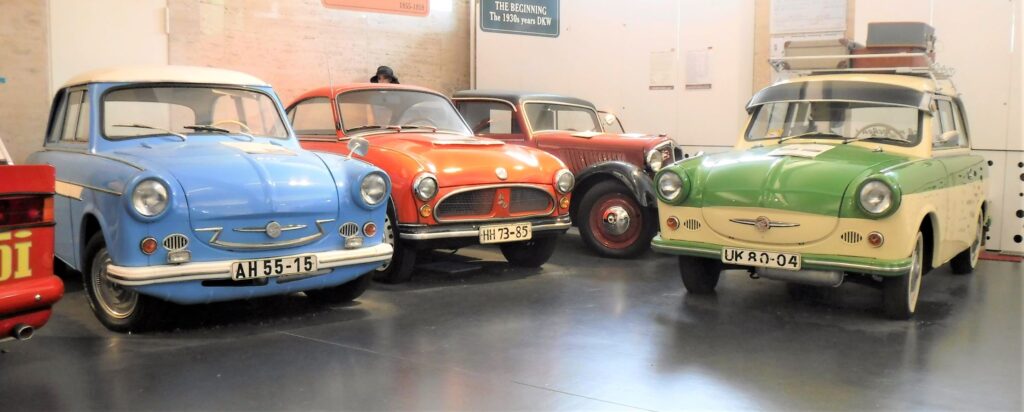
Cars can earn a cult following for many reasons. It could be timeless style, dependability, or tyre-scorching performance. The Trabant has none of these things, and yet DDR’s little car that could has a loyal following that sees nearly 25,000 of them still out on the road.
As long suffering followers of Midlife Crisis Odyssey will know, I’m a bit partial to cars and car culture, so when I found out there was a museum dedicated to the ‘Trabi’ in Berlin, I went along to check it out.
The Trabi Museum is located just near Checkpoint Charlie, so is in a good spot to pick up a bit of walk-in traffic. Despite this, the place is empty when I turn up. After paying the very reasonable sum of 5 euros for my ticket, I entered the magical, tragical world of the Trabant.
To understand why the Trabant came to be…well…the Trabant (the name means ‘companion’), you have to look at the social and economic environment that spawned it. Life was tough for the people of socialist East Germany, and sourcing raw materials to build motorcars was expensive and difficult. Therefore, a ‘people’s car’ would have to be cheap to buy and run, and incorporate locally-sourced materials.
A small car’s a cheap car, and the Trabi is small, with the first model at just over 3.3 metres long and 1.5 metres wide. A shortage of steel lead to the development of ‘Duroplast’, a type of plastic compound reinforced with cotton or wool fibre that was used for the Trabant’s panels. A tiny 2-stroke engine ‘powered’ the car.
In 1957 the first Trabant, the P50, emerged from the factory. The Trabi Museum had this neat little two-tone example on display.
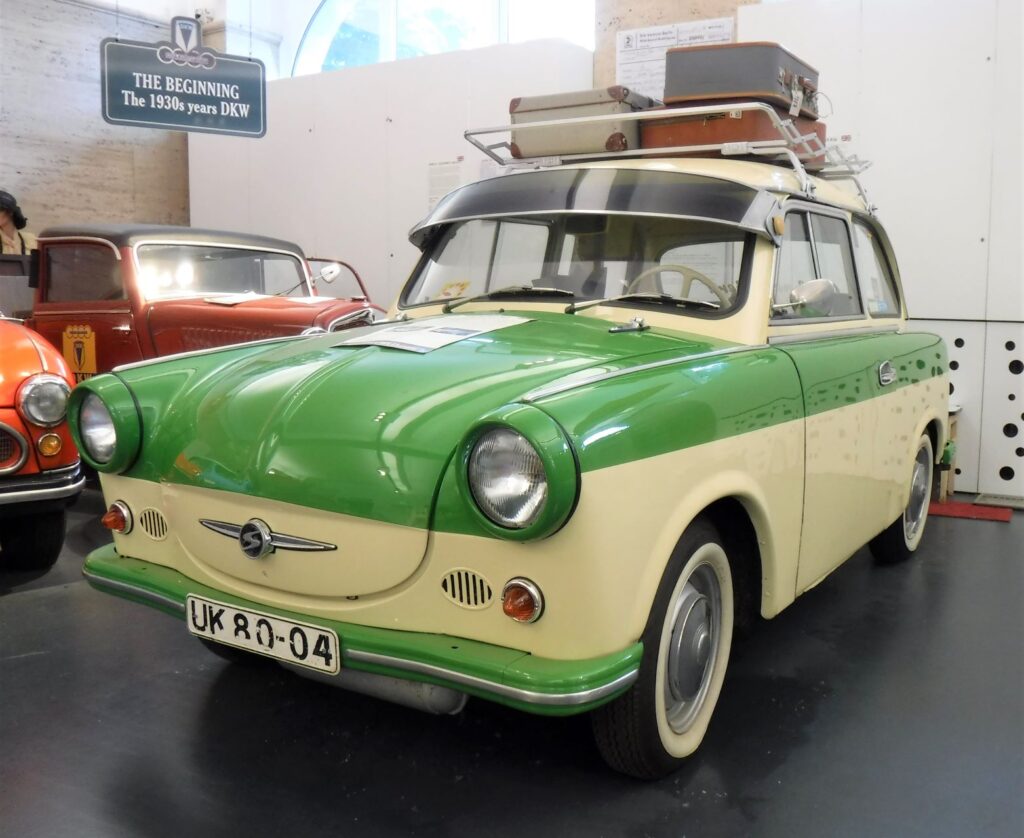

The ’50’ in P50 refers to the near 500cc capacity of the two-stroke motor, which produced 18 horsepower, and was enough to drag the Trabant from zero to its top speed of 100km/h in 21 seconds. This is the engine, gearbox, fuel tank, and steering from a Trabant. Compact, innit?
Even the East German Government considered the single-axle Trabant too austere
The Museum had a Trabant on display that you could climb into. Historical reviews of the Trabi often mentioned that it is ‘big enough for the whole family’. Well, I think that’s true if you were a very short single parent with infant triplets, but otherwise it’s a bit of a stretch. Which is what I had to do to get in and out of the car.
The dash of the Trabant was simple to say the least.
The Trabi’s switches had a distinctly ‘Fisher Price’ feel about them
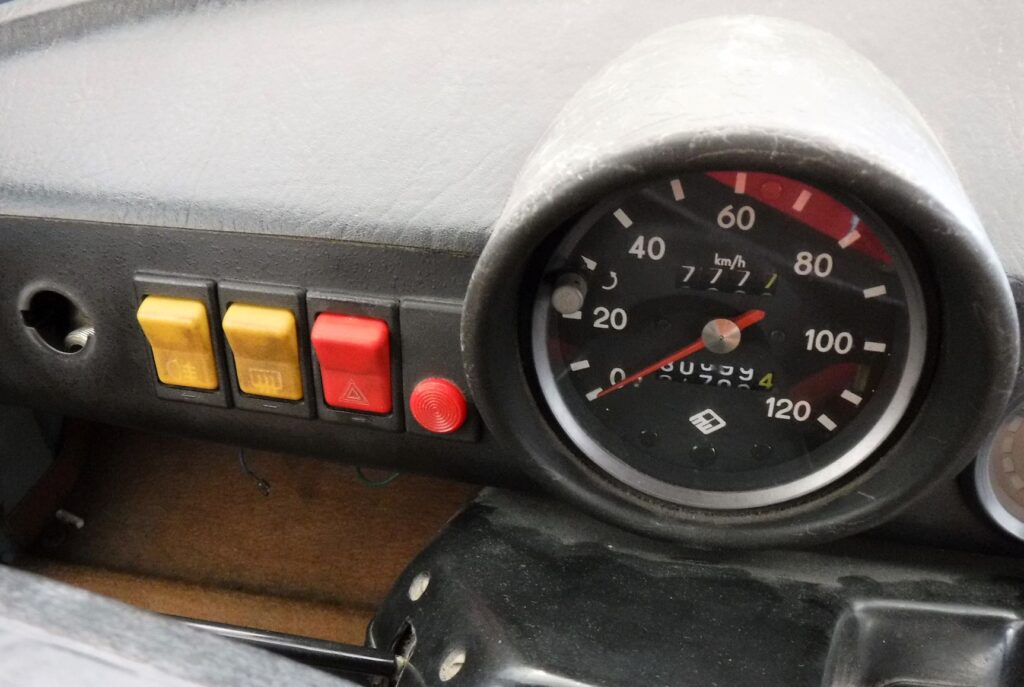
One of the many criticisms levelled at the Trabant was that it barely evolved over its 34 year and 3,096,099 unit production run. This was not, however, due to a lack of engineering foresight. The East German socialist command economy decided that it was not going to invest in the development of the Trabant, so the bucks simply weren’t there. At least you knew if you ordered a Trabant when there was a ten year wait for delivery, the car would still be exactly the same as the one you ordered when it finally arrived. (In fact, second-hand Trabant’s were more expensive than new ones, as they were immediately available.) Well pretty much, anyway, as despite the R & D troubles, the Trabant 601 was released in 1964, which was nearly the same as the P50 save for an extra 100cc of engine capacity.

The Trabi Museum also contained an example of the model that preceded the cult classic. The ‘extremely expensive’ P70 coupe was a decidedly bourgeois affair, and was described by the Museum thus: ‘…with its narrow front seats and narrow rear bench, (it was) hardly suitable for families (and the P50 was?) but rather a vehicle for a rather extravagent driver that wanted to show himself and his elegant and sporty car on a large urban boulevard.’ Arguably a little over stated, but compared to the P50, the P70 was pretty sexy.
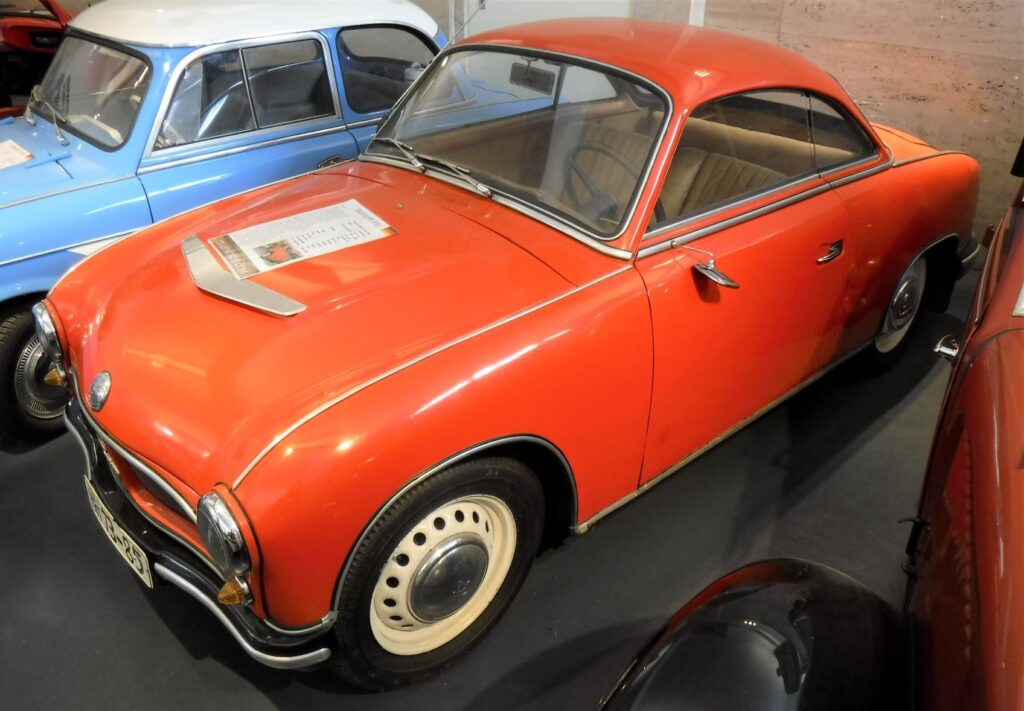
In addition to the ‘cars for the people’, the Trabant was also used by the People’s Police in East Germany. It’s hard to imagine that this car was actually built in the late 1980s, and yet it was, and issued to several police districts. The Trabi police car experiment was scrapped after a short time, with the Museum suggesting: ‘It’s hard to imagine the vehicles instilled respect or fear. Not to mention that the engine power was simply not enough to chase other cars effectively’. Yep. Sometimes it’s best to admit it’s just not going to work.
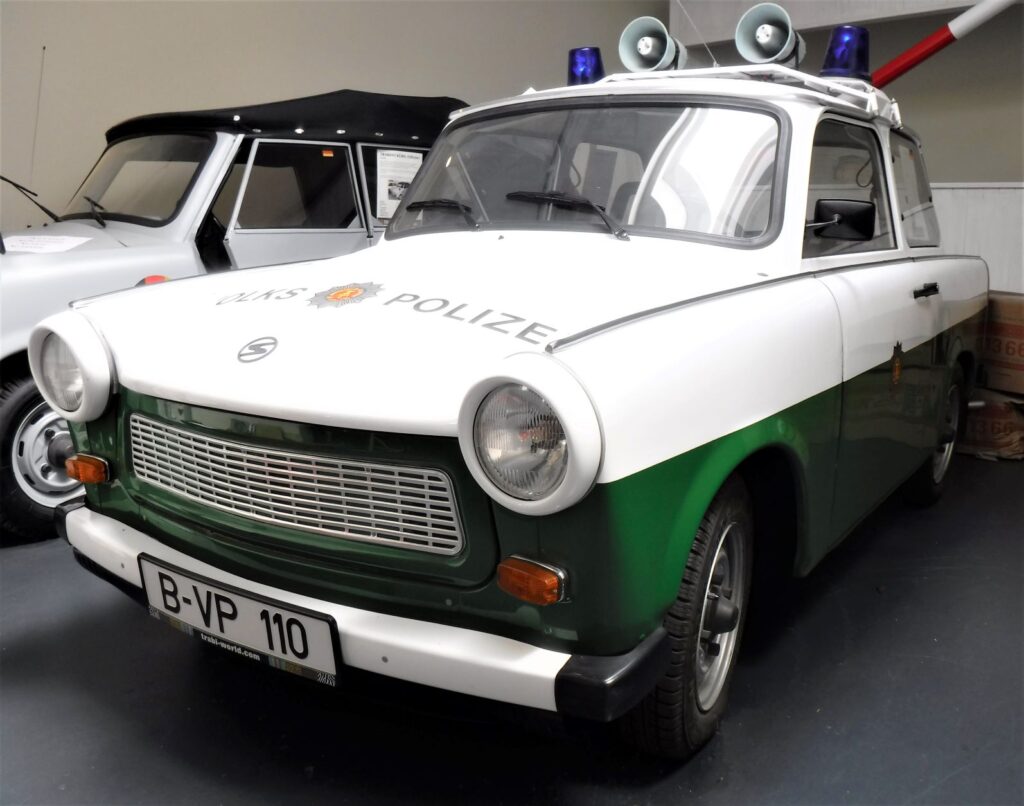
After the disintegration of the DDR, and the fall of the wall, a line of little Trabis made its way into West Germany to the cheers of a massive crowd. With the reunification of the country, and the opportunity to buy a car that wasn’t a Trabant, it seemed like East Germany’s little battler had reached the end of the road.

However, nostalgia and a genuine love for the Trabi has seen a revival in its popularity, and now annual meetings and festivals in Germany celebrate the car. And, of course, Berlin has a Trabi Museum!
It’s easy to stand back and criticise the Trabant for all the things it isn’t, but I reckon it’s important to remember all the things it is. As the old saying goes, you can’t make strawberry jam from shit, and I reckon the East German engineers did pretty well to mass produce a car with bugger all materials and no support. So next time you see a Trabant trundling by in a haze of blue smoke, give the driver a wave. You are witnessing an enduring piece of history from behind the Duroplast Curtain.

To visit the Trabi Museum website click here
If you liked this post, you may also like Varna’s Retro Museum, The Royal Automobile Museum, Jordan
Leave a Reply